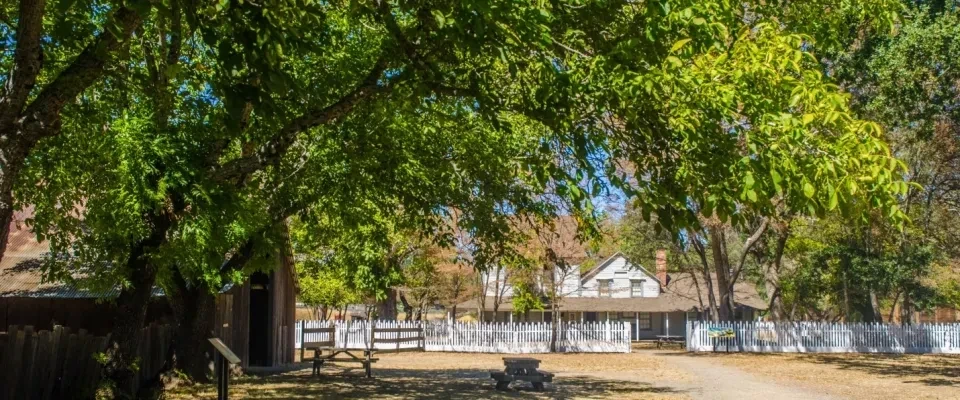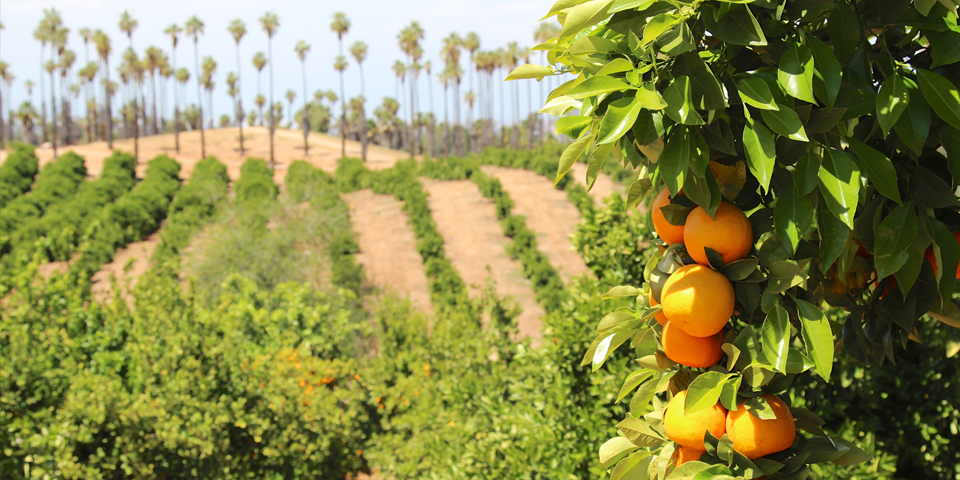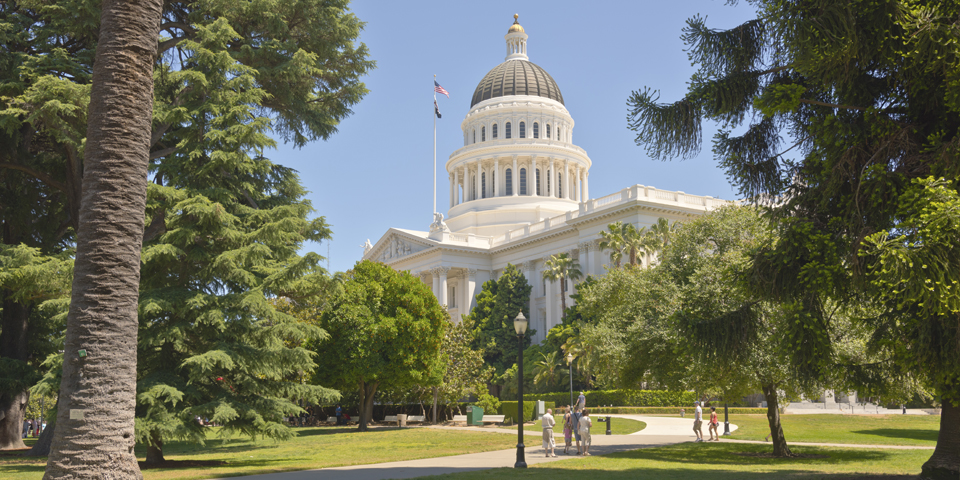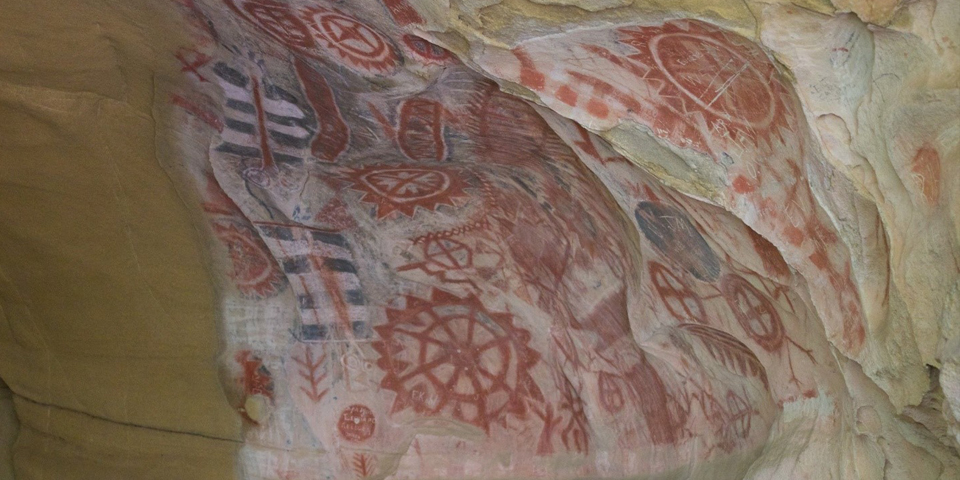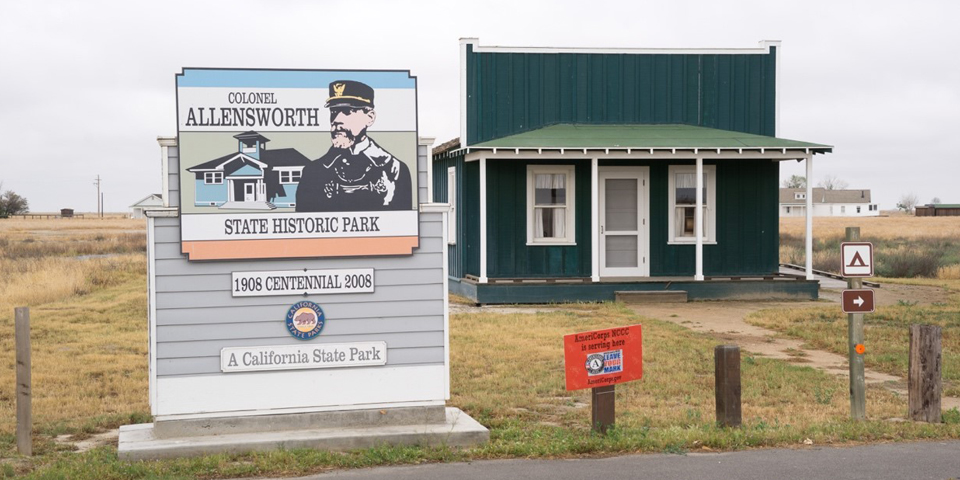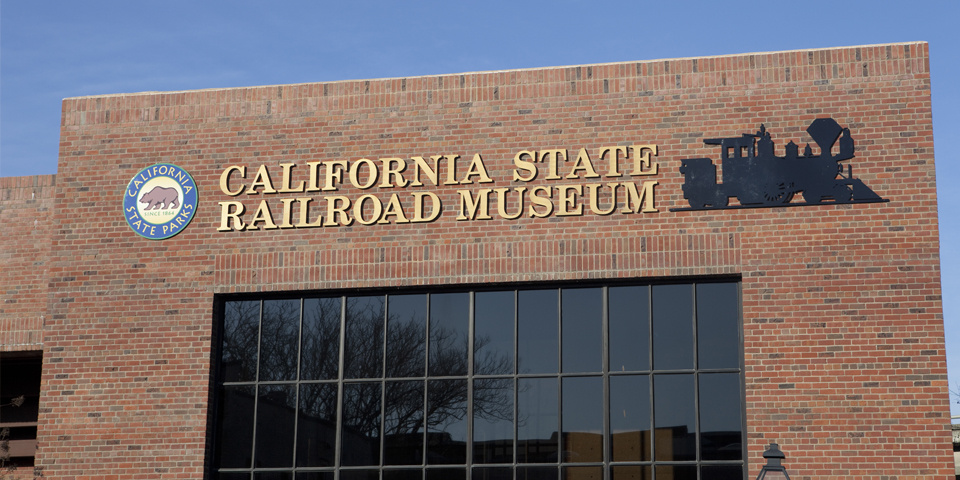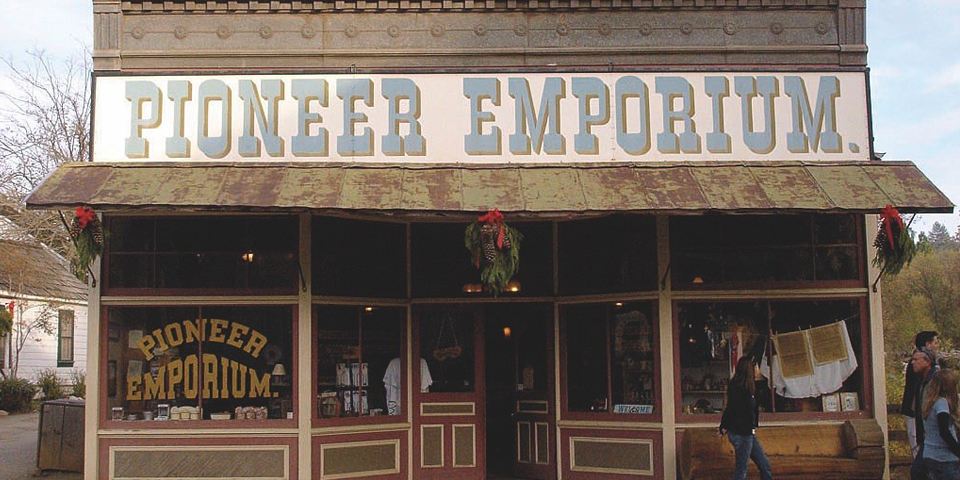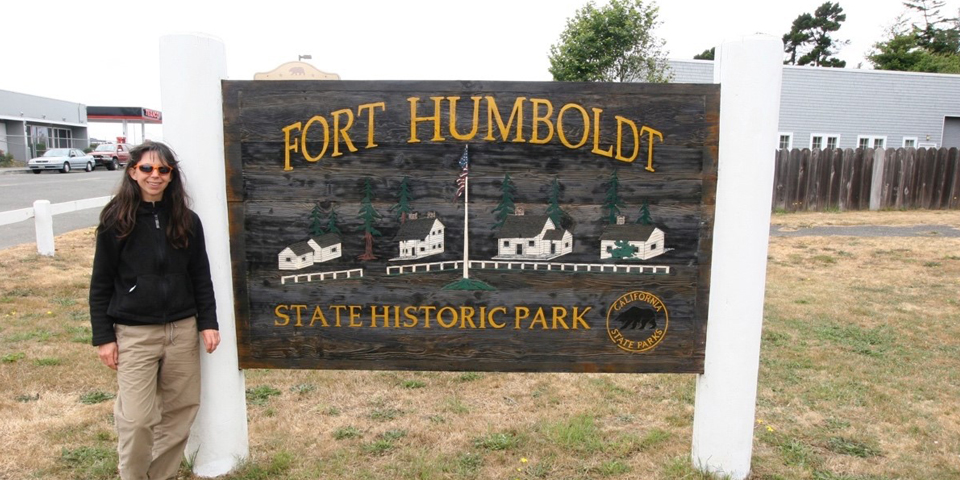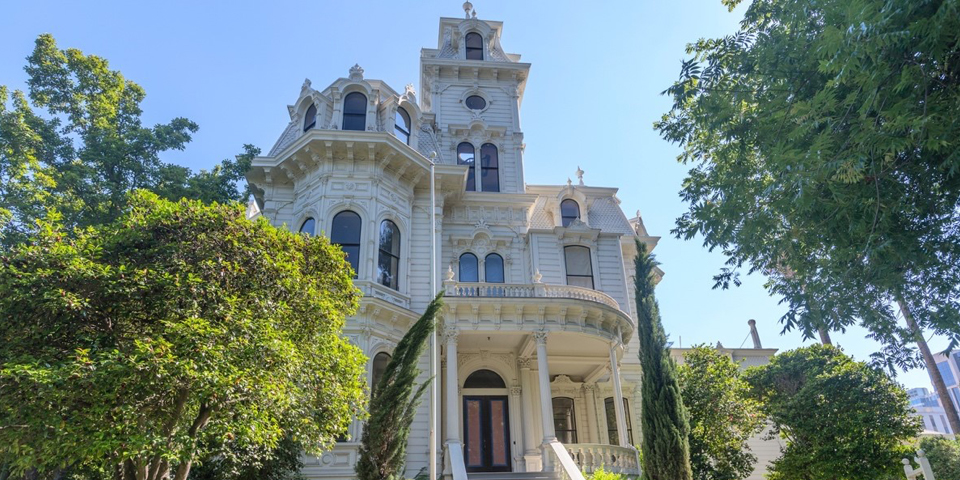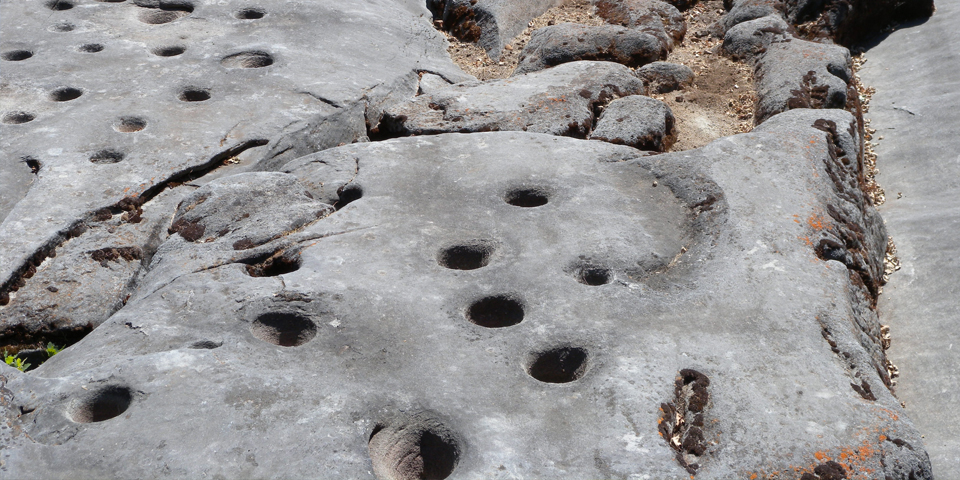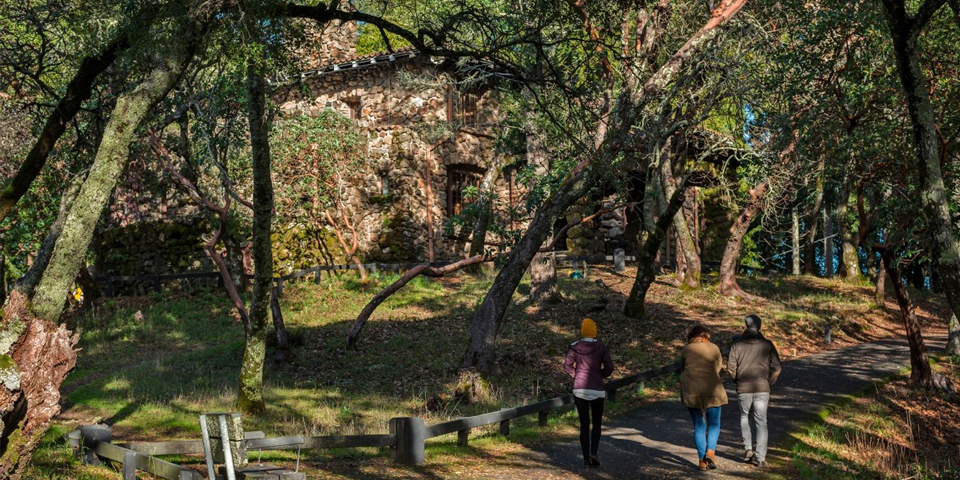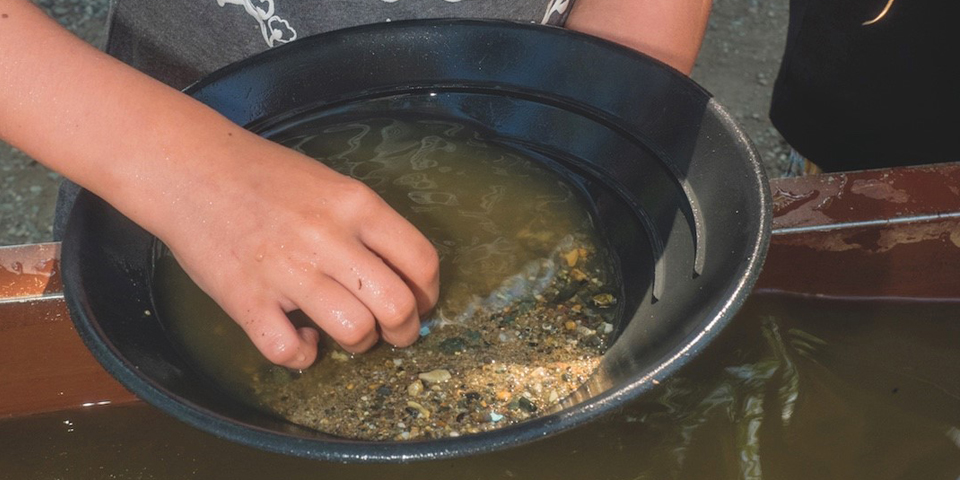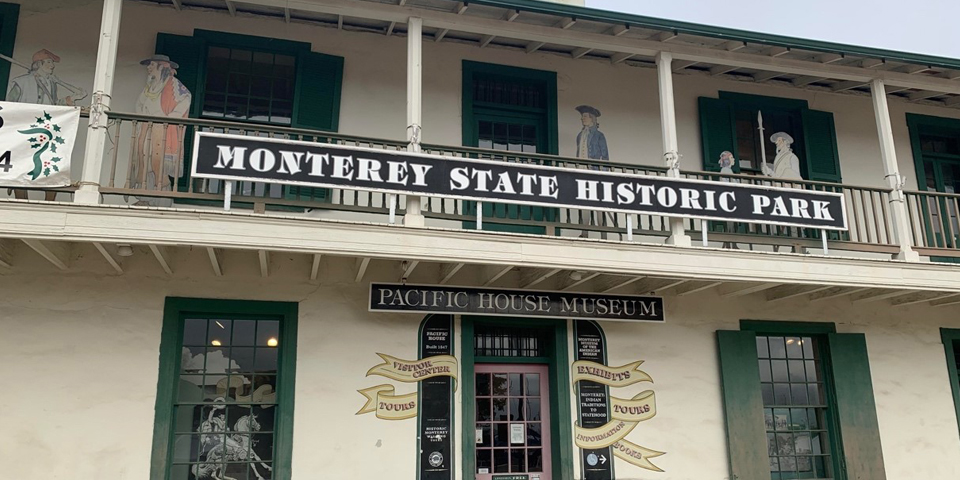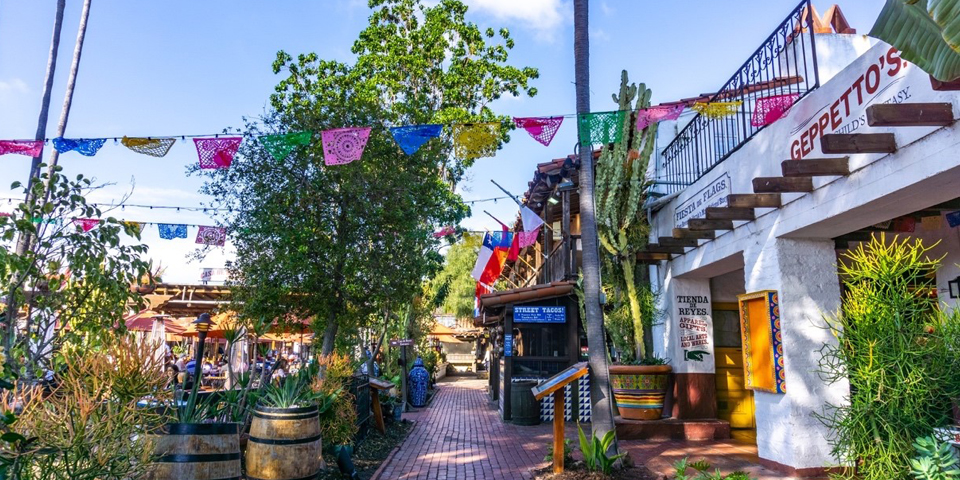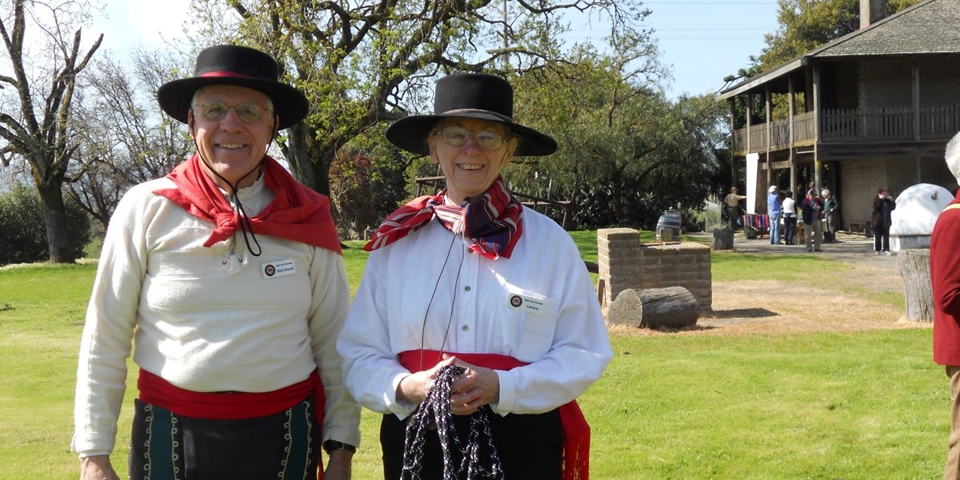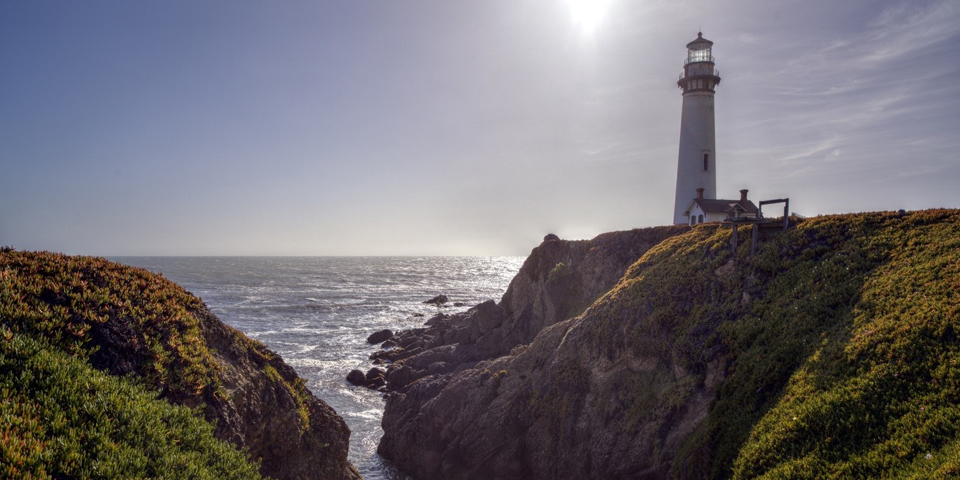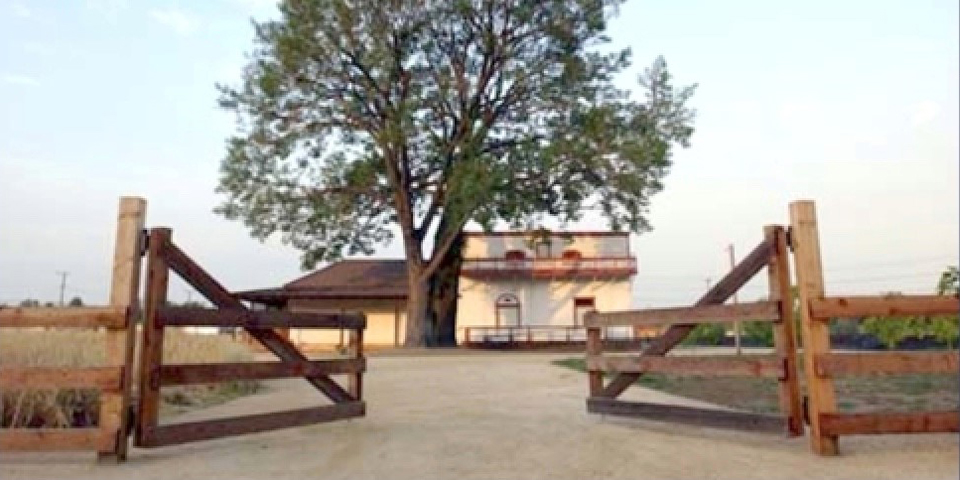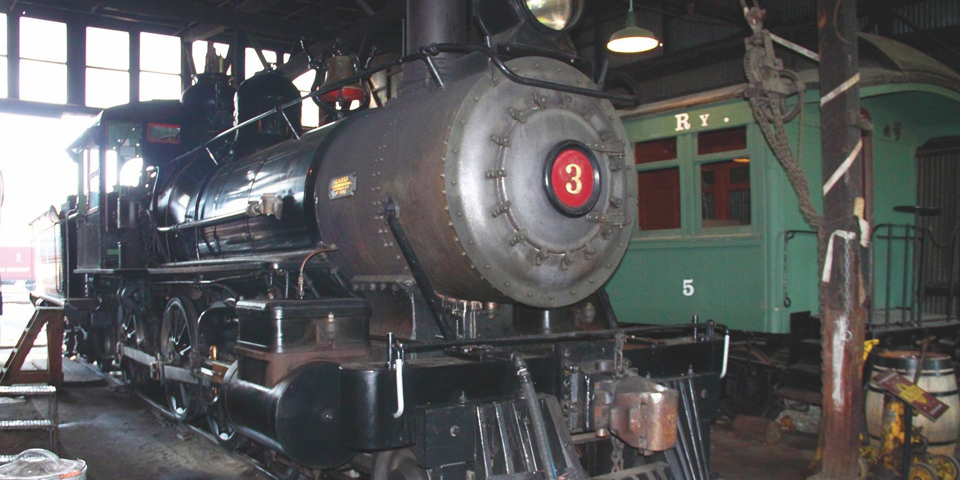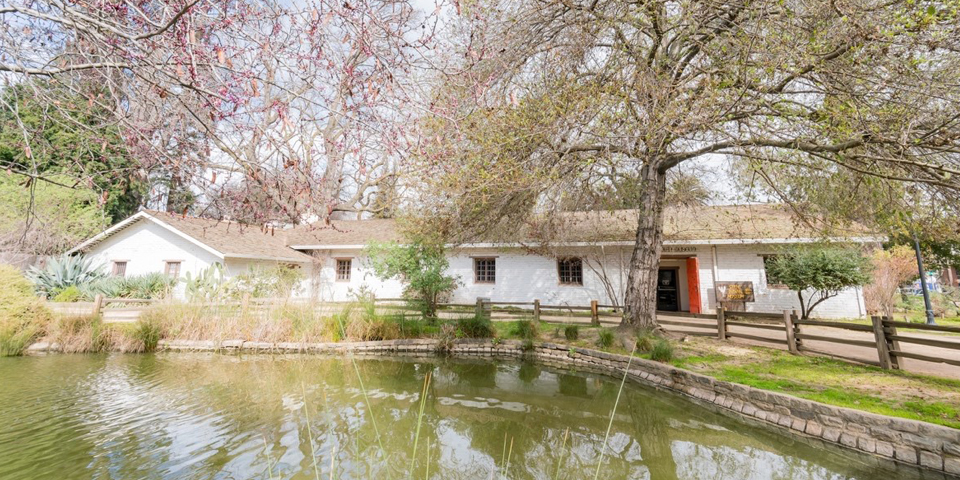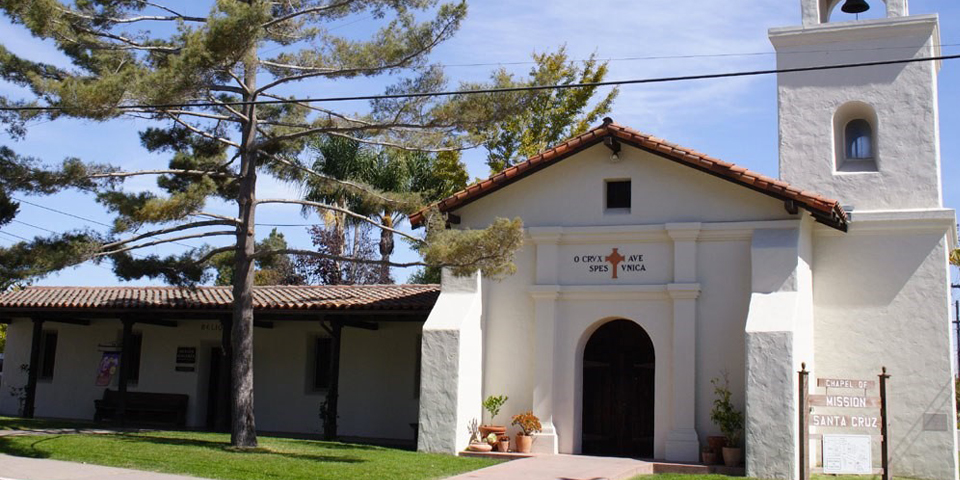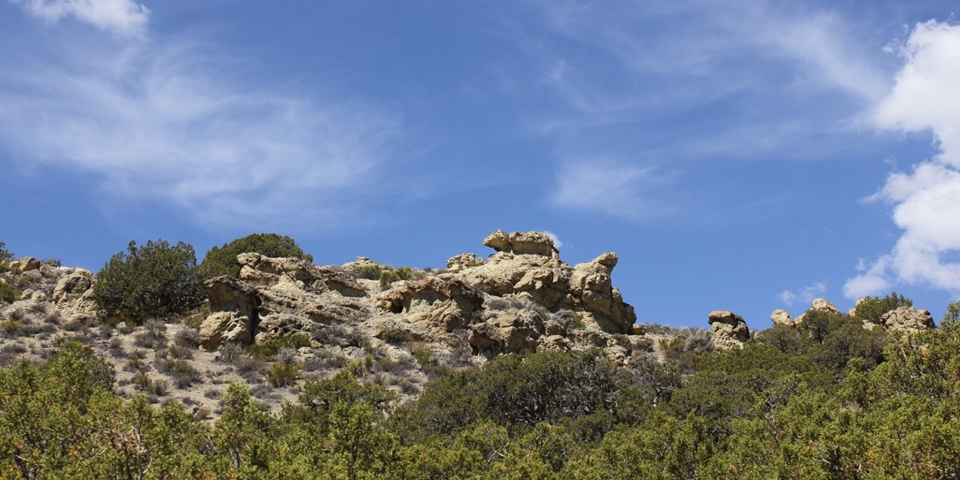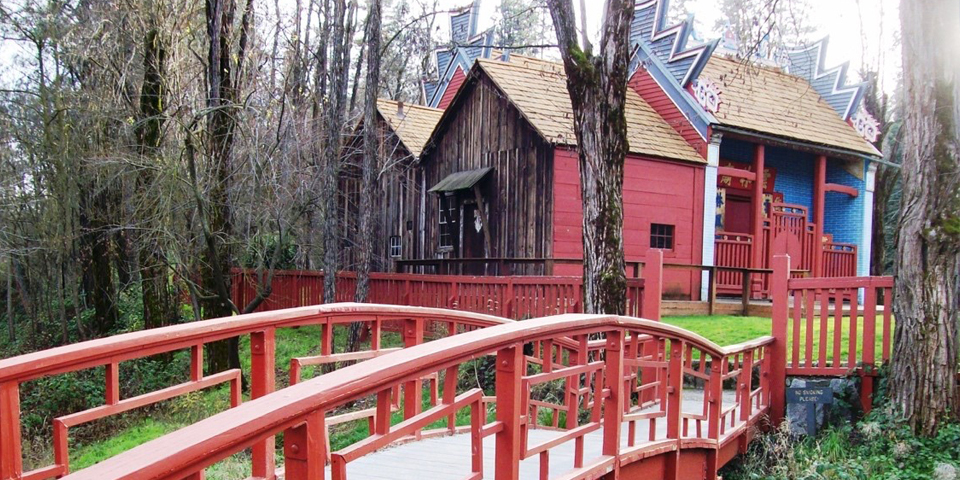You can tell the history of California through state parks. From the very beginning with Native Americans, up until modern times, California has grown and changed. Each park has a story to tell that fits into the greater history of the Golden State, and there is so much to learn from these places.
The story of our California is woven into the fabric of our 47 state historic parks. They are destinations for students and teach us about Californian’s history and statehood. These state parks bring our complex history and important figures from our past to life.
While some of these parks are closed due to coronavirus (COVID-19), we hope you can still enjoy them virtually through the resources we have provided. See the list below to learn more.
Anderson March State Historic Park | California Citrus State Historic Park | California State Capitol Museum | Chumash Painted Cave State Historic Park | Colonel Allensworth State Historic Park | California State Railroad Museum | Columbia State Historic Park | Fort Humboldt State Historic Park | Governor's Mansion State Historic Park | Indian Grinding Rock State Historic Park | Jack London State Historic Park | Marshall Gold Discovery State Historic Park | Monterey State Historic Park | Old Town San Diego State Historic Park | Petaluma Adobe State Historic Park | Pigeon Point Light Station State Historic Park | Pío Pico State Historic Park | Railtown 1897 State Historic Park | State Indian Museum | Santa Cruz Mission State Historic Park | Tomo-Kahni State Historic Park | Weaverville Joss House State Historic Park
Anderson March State Historic Park
Anderson March State Historic Park contains archaeological sites of the Southeastern Pomo that are at least 10,000 years old, as well as a 19th Century Ranch House and Barn complex built by the first European settlers on the land. This California state historic park has more than 50 registered California Indian sites, some that are over 6,000 years old.
There are hiking and boating trails that allow the visitor to experience several protected habitats within the park, including freshwater marsh, oak woodland, grasslands, and riparian woodland.
California Citrus State Historic Park
California Citrus State Historic Park explores the history of agriculture in California. In 1873, the U.S. Department of Agriculture forever changed the history of Southern California when it sent two small navel orange trees to Riverside resident Eliza Tibbets. Those trees, growing in ideal soil and weather conditions, produced an especially sweet and flavorful winter harvest fruit. Word of this far superior orange quickly spread, and a great agricultural industry was born.
In the early 1900s, an effort to promote citrus ranching in the state brought hundreds of would-be citrus barons as well as thousands of migrant and immigrant agricultural workers to California for the "second Gold Rush." This resulted in the growth of cities and communities throughout Southern California, most of which were segregated along class and racial lines. On the surface, however, the lush groves of oranges, lemons and grapefruit contributed to California's legacy — its lingering image as the Golden State — and the land of sunshine and opportunity.
Explore this state park through videos about the current grove and the past.
California State Capitol Museum
Did you know our state capitol is actually a California state park? The California State Capitol Museum consists of a museum and grounds around the California State Capitol in Sacramento. The building has been the home of the California State Legislature since 1869. The State Capitol Museum has been a property in the California State Parks system since 1982. To learn more, watch a video from the California State Parks PORTS program.
Chumash Painted Cave State Historic Park
The sandstone cave houses at Chumash Painted Cave State Historic Park
depict religious drawings by Chumash Native Americans, as well as likenesses of coastal fishermen that date back to the 1600s. Found above Santa Barbara in a steep canyon, the site preserves these fine examples of Native American art on the side walls of the rock shelter. The pictographs made by Chumash people in the sandstone cave are some of the best examples of painted rock art in California.
Explore a virtual tour and the history of this sandstone cave.
Colonel Allensworth State Historic Park
Colonel Allensworth State Historic Park is the only California town to be founded, financed and governed by African Americans. The small farming community was founded in 1908 by Lt. Colonel Allen Allensworth, Professor William Payne, William Peck, a minister; John W. Palmer, a miner; and Harry A. Mitchell, a real estate agent, dedicated to improving the economic and social status of African Americans. To learn more, check out our blog post about this park.
To view photos, videos, coloring books, and teacher resources, view these resources put together by the Smithsonian.
To view quizzes designed for learning about this park, please click here.
California State Railroad Museum
The California State Railroad Museum, a Smithsonian Affiliate, offers a sight of rail history with over 2.5 acres of exhibits on the property. There is a roundhouse museum space filled with trains, a picnic area on our 1849 scene, museum store, library, turntable, passenger station, and the areas only historic and authentic excursion train ride.
Play an interactive game that takes you on a journey from San Francisco to Sacramento during the early 1900s. Provided by Sacramento History Online.
Columbia State Historic Park
On January 24, 1848 James Marshall discovered gold at Sutter's Mill along the American River. The discovery sparked the famous California gold rush. Between 1848 and 1852, California's population grew from 14,000 to 223,000. As thousands of people poured into the gold regions of northern California from throughout the world, they formed unique, diverse communities. Columbia State Historic Park preserves the historic remnants of one such gold rush community. To learn more, watch a video from the California State Parks PORTS program.
Columbia State Historic Park Virtual Curriculum
Fort Humboldt State Historic Park
Fort Humboldt State Historic Park is situated on a bluff overlooking Humboldt Bay. This remote military post was established in 1853 to assist in conflict resolution between Native Americans and gold-seekers and settlers who had begun flooding into the area after the discovery of gold in the northern mines.
Later, Fort Humboldt would become the headquarters for the Humboldt Military District, which included Forts Bragg and Wright in northern Mendocino County, extending north through Humboldt County to Fort Ter-Waw in Klamath and Camp Lincoln near present-day Crescent City.
It was during its first few years that Fort Humboldt was home to one of its most famous residents, the young Captain Ulysses S. Grant. After being decorated for bravery in the Mexican-American war, he was posted to several locations including Fort Vancouver in the Pacific Northwest. The isolation of Fort Humboldt did not appeal to Grant, and after serving as commanding officer of Company F for six months, resigned his commission.
Watch this video to explore the park!
Governor's Mansion State Historic Park
The Governor's Mansion State Historic Park is a Victorian-style mansion in central Sacramento. The interior's details, including marble fireplaces from Italy and decorations from France, are beautifully maintained and evoke the rich history of California in the 20th century. The property was built in 1877 and bought for use as the governor's residence in 1903.
Photos and information about the mansion can be found here.
Indian Grinding Rock State Historic Park
Indian Grinding Rock State Historic Park contains 1,185 granite bedrock mortars, which is the largest collection of mortars in North America. Chaw’se Regional Indian Museum features a variety of exhibits and an outstanding collection of Sierra Nevada Indian artifacts, including those from Northern, Central, and Southern Miwok, Maidu, Konkow, Monache, Nisenan, Tubatulabal, Washo, and Foothill Yokut.
In the Miwok language, Chaw'se refers to the grinding holes where acorns, seeds, and other items were processed. This park includes a Miwok village complete with a roundhouse, bedrock mortars and petroglyphs. The museum includes 1,500 objects including feather dance regalia, stone tools, and other items that represent the material culture of the Sierra Miwok. The Chaw'se museum collections and interpretive exhibits include "both past and present-day" objects used by Miwok people.
Take a video adventure to Indian Grinding Rock State Historic Park!
Jack London State Historic Park
Jack London captures the spirit and dream of a big thinker. This is where he did a lot of his last writing, where he got inspiration, where he sat down every morning and churned out the words that made him one of America’s most popular authors. Today, Californians and people all over the world come to commune with the spirit of Jack London, the palpable essence that the man left behind.
Jack London traveled the world in search of adventure, but in the early 20th century, he established Beauty Ranch in Sonoma County. In 1913, Jack’s dream home, Wolf House, was destroyed by fire, just before he and his wife Charmian were to move in. He spent his final years living and working in a cottage on the property, and when he died in 1916 his ashes were placed beneath a rock, near Wolf House. On September 24, 1960, the new state park hosted an opening dedication ceremony and Jack London State Historic Park was open to be enjoyed by the public.
Explore videos about the park, and Jack London himself.
Marshall Gold Discovery State Historic Park
James W. Marshall discovered gold in 1848 on the South Fork of the American River in the valley the Nisenan Indians knew as Cullumah (beautiful valley). This event led to the greatest mass movement of people in the Western Hemisphere and was the spark that ignited the spectacular growth of the West during the ensuing decades. This discovery changed the course of California and the nation's history. See a replica of the original sawmill and over 20 historic buildings including a mining exhibit, Chinese store exhibits and schoolhouse exhibit at Marshall Gold Discovery State Historic Park.
Visitors can pan for gold in the American River and enjoy hikes and picnics under the riparian oak woodlands. Overlooking the beautiful river canyon is the Marshall Monument, California's first historic monument and the final resting place of James Marshall.
Watch this video that gives the history of this park and the gold rush.
Monterey State Historic Park
One of California's most historic cities, Monterey served as California's capital under Spanish, Mexican and U.S. military rule. The U.S. flag was first officially raised in California here on July 7, 1846, bringing 600,000 square miles of land to the United States.
Monterey State Historic Park is a collection of significant historic houses and buildings interspersed throughout Old Monterey. Hour-long guided history tours are led regularly; tour information and tour tickets may be obtained at the Custom House (adjacent to Old Fisherman's Wharf). History tours are a great way to start your discovery of Monterey.
Take a look through Custom House. This building is recognized as the oldest government building in California. It is State Historic Landmark #1.
Old Town San Diego State Historic Park
Learn about life in what is now California during the Mexican and early American periods of 1821 to 1872. Even today, life moves more slowly in this part of San Diego, where the hustle and bustle is balanced with history and fiestas. Visitors are offered a glimpse into yesteryear, as converging cultures transformed San Diego from a Mexican pueblo to an American settlement. San Diego became California's first Spanish settlement when a mission and fort were established here in 1769. Later, it passed into the hands of the newly made Mexican government before gaining statehood in the United States after the Mexican-American War.
At Old Town San Diego State Historic Park, the core of restored original historic buildings from the interpretive period are complemented by reconstructed sites, along with early twentieth century buildings designed in the same mode. Five original adobe buildings are part of the historic park, which include museums, unique retail shops, and several restaurants. The Historic Plaza remains a special place for gatherings and historic activities. Visitors can also experience a working blacksmith shop, enjoy music, see or touch the park's burros, and engage in activities that represent early San Diego.
Read more about the different buildings at the park and their history.
Petaluma Adobe State Historic Park
A visit to the Petaluma Adobe State Historic Park will bring you back to the largest privately-owned adobe building in Northern California in the 1830-40s and the center of activity on one of the most prosperous private estates established during the Mexican Period. The matanza (slaughtering season) has just ended in October on Rancho de Petaluma (as it was known) and the people living near the rancho are excited. The end of the matanza means the beginning of the Fandango (a celebration and dance). As you tour the rooms of the Adobe, you can feel the excitement as preparation for the Fandango is under way. The hides are drying on the racks, the animals are put away, and the music is playing as people start to put on their fancy clothes for the festivities.
Explore more of the cultural history here.
Pigeon Point Light Station
Perched on a cliff on the central California coast, 50 miles south of San Francisco, the 115-foot Pigeon Point Lighthouse, one of the tallest lighthouses in America, has been guiding mariners since 1872. Its five-wick lard oil lamp, and first-order Fresnel lens, comprised of 1,008 prisms, was first lit at sunset, November 15, 1872. The lens stands 16 feet tall, 6 feet in diameter, and weighs 2,000 pounds. Now on display in the fog signal building, it sat in a lantern room constructed at the Lighthouse Service's general depot in New York before being shipped around the Horn. Although the original Fresnel lens is no longer in use, the lighthouse is still an active U.S. Coast Guard aid to navigation using an automated LED beacon.
The coastal areas surrounding Pigeon Point Light Station are rich with life. Marine mammals, such as seals and whales, can be seen regularly from shore as they pass by beyond the surf. The intertidal zone along this part of the coast, particularly in the rocky reefs that flank the light station, contains a diverse and numerous varieties of plant and animal life.
To learn more about the history, check out our blog post on this park.
Pío Pico State Historic Park
Pío de Jesus Pico is one of California’s most remarkable historical figures. He witnessed, shaped and influenced nearly a century of California history in the 1800s. Pío Pico was the governor of California in 1832 and again in 1846 before and during the Mexican-American War. His adobe home at “El Ranchito” has been completely restored to how it appeared in the 1880s letting visitors experience and celebrate his life and times. Born at the San Gabriel mission in 1801, his ancestry included a mixture of Spanish, African, Indian and Italian, and he lived in a time when the Spanish, Mexican, and American flags flew over California.
Former Governor Pico began to build his home here in about 1848, and it has seen several changes over the last 150 years. The “little ranch” and adobe home at Pío Pico State Historic Park is now surrounded by the communities of Whittier and Pico Rivera east of Los Angeles. Much has changed since Pico’s time, but for local and state-wide history, Pío Pico State Historic Park is a shining gem and testament to life in early California.
Enjoy a 360-degree experience of this park!
Railtown 1897 State Historic Park
Located in Jamestown, in the heart of California’s Gold Country about 100 miles southeast of Sacramento, Railtown 1897 State Historic Park is home to the Historic Jamestown Shops and Roundhouse—an intact and still-functioning steam locomotive repair and maintenance facility, portions of which date back to 1897. This one-of-a-kind attraction combines industrial heritage and railroad history with the lore of Hollywood’s film industry.
Watch this video to experience a day at Railtown 1897 State Historic Park!
State Indian Museum
The State Indian Museum, opened in 1940, depicts three major themes of California Native American life: nature, spirit, and family. Native peoples lived prosperously for thousands of years in what is now California. All of the exhibits and photographs on display in the museum are presented with respect for those who went before us on this land and continue to live in California communities today.
California Native Americancultural items in the museum include traditional baskets, along with some of the smallest in the world, a redwood dugout canoe, ceremonial regalia, beadwork, and hunting & fishing tools – some of which are more than 2,400 years old. There is also an exhibit depicting the life of Ishi, reputedly the last survivor of the Yahi tribe, illustrating how native culture was powerfully impacted and forever changed when outsiders arrived.
Click here to learn more about Interpreting California Native American Culture and Heritage.
Santa Cruz Mission State Historic Park
Santa Cruz Mission State Historic Park sits atop Mission Hill offering a patio, gardens, and excellent views of the city. The park features the only building left of the 12th California Mission, Misión la Exaltacion de la Santa Cruz, founded by the Franciscans in 1791. Restored to its original appearance, the austere single-story adobe was once housing for the California Native American residents of the Mission. Exhibits inside tell the story of the mission through the lens of the experience of the Ohlone and Yokuts people.
Tomo-Kahni State Historic Park
Kawaiisu Native American Village was created as Tomo-Kahni State Historic Park, a unit of California State Parks in 1993 to protect and preserve the integrity of the location. Overlooking Sand Canyon to the east and the Tehachapi valley to the west, Tomo-Kahni, or "Winter Village," was the site of a Kawaiisu (Nuooah Village). The Kawaiisu migrated from the Great Basin and made Tehachapi their home for two to three thousand years.
The Kawaiisu are noted for their finely woven baskets of intricate and colorful design. Aside from the Kawaiisu winter village, there are trails and rock art. Due to the extremely sensitive nature of the site, Tomo-Kahni is available to the public by tour only.
Learn more about the life as it used to be at Tomo-Kahni with information and coloring pages.
Read our blog post on Tomo-Kahni State Historic Park.
Weaverville Joss House State Historic Park
The Weaverville Joss House, a Taoist Temple of Worship, is now a state park and is the oldest still-in-use Chinese Temple in California. Weaverville Joss House State Historic Park is an intact and complete temple of that era, which no longer exists in many parts of China.
To learn more, check out our blog post about this park.
The lessons of our legacy can be discovered in California state historic parks, from one end of California to the other. These are treasures of our diverse and fascinating heritage, that have been carefully preserved by those who came before us, for our benefit, and for the benefit of all those who will follow in our footsteps.
As you virtually explore these historic parks we would love to hear from you! Share your photos or stories by tagging us at @calparks on Twitter and Instagram, and California State Parks Foundation on Facebook. We hope you enjoy these resources to learn more about California’s state historic parks.
All information about these parks is from California State Parks, and more can be found on their website here.
